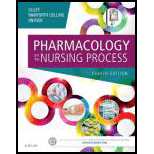
To discuss:
The effects of an immune system with attention to various types of immunity.
Concept introduction:
The immunology is a branch of science that deals and studies the immune system of the body. The immune system helps to protect against invading pathogens as well as to eliminate whatever that are regarded as foreign to the body.
Explanation of Solution
The immune system of the body is separated into non-specific and specific immunity. The non-specific are further divided into first-line defense and second line defense. The specific immunity is considered to be the third line of defense.
The first line of defense: the first line of defense is also called as innate immunity, otherwise called as acquired by birth. The first line of defense is skin, gastrointestinal tract, cilia, sweat, oily layer under the skin, and mucosa. They are also called as physical barriers and they non-specifically stop invading pathogens.
The second line of defense: the second line of defense in particular than the innate immunity since the second line of defense is compromised by cells to destroy the pathogens. They eliminate the pathogens that crossed the physical barriers or pathogens in the bloodstream. The second line of defense is macrophages, natural killer cells, eosinophils, and neutrophils.
The third line of defense: these are more sophisticated cells that effectively seek and eliminate the microbes. These cells possess memory that effectively and quickly kills the pathogens if they encountered it before. They also produce antibodies to neutralize the virus, moreover they also eliminated the infected host cell. The third line of defense has T-cells and B-cells.
The second and third line of defense mechanisms acts together in effective elimination of pathogens.
Want to see more full solutions like this?
Chapter 40 Solutions
Pharmacology and the Nursing Process, 8e
- true or false dark skinned infants should be screened for vitamin D levelsarrow_forwardtrue or false any practice employee is authorized to and should communicate collection guidelines with practice?arrow_forwardrtrue or false equesting a listing of specific creditreferences during patient intake os an acceptable business practice?arrow_forward
- give an overview on the respiratory assessmentarrow_forwardexplain an abdominal exam?arrow_forwardDiscuss β -Lactam antibiotics under the following subheadings Classifications of penicillins Classification of Cephalosporins General Mechanism of Actions Clinical Indications of penicillins and cephalosporins Adverse effects of β-lactamsarrow_forward
- a. Define neoplasm b. Differentiate between benign and malignant tumours c. Describe the molecular basis of cancerarrow_forwarddifferentiate the extra heart sounds S3,S4, murmurs and gallopsarrow_forward• Define shock and list types of shock • Discuss pathogenesis of septic shock. • Enumerate the stages of shock. • Define oedema and describe the pathophysiologic mechanisms of oedema with examples.arrow_forward
- Discuss Hypertension under the following headings: Definition Diagnosis Non-pharmacological intervention Drugs Classification Management of a Hypertensive emergencyarrow_forwardExplain how the answer could be 2 or 1.8 WITHOUT changing the questionarrow_forwardoverview of the neurological system, cranial nerves and what part of the body it innervatesarrow_forward
 Phlebotomy EssentialsNursingISBN:9781451194524Author:Ruth McCall, Cathee M. Tankersley MT(ASCP)Publisher:JONES+BARTLETT PUBLISHERS, INC.
Phlebotomy EssentialsNursingISBN:9781451194524Author:Ruth McCall, Cathee M. Tankersley MT(ASCP)Publisher:JONES+BARTLETT PUBLISHERS, INC. Gould's Pathophysiology for the Health Profession...NursingISBN:9780323414425Author:Robert J Hubert BSPublisher:Saunders
Gould's Pathophysiology for the Health Profession...NursingISBN:9780323414425Author:Robert J Hubert BSPublisher:Saunders Fundamentals Of NursingNursingISBN:9781496362179Author:Taylor, Carol (carol R.), LYNN, Pamela (pamela Barbara), Bartlett, Jennifer L.Publisher:Wolters Kluwer,
Fundamentals Of NursingNursingISBN:9781496362179Author:Taylor, Carol (carol R.), LYNN, Pamela (pamela Barbara), Bartlett, Jennifer L.Publisher:Wolters Kluwer, Fundamentals of Nursing, 9eNursingISBN:9780323327404Author:Patricia A. Potter RN MSN PhD FAAN, Anne Griffin Perry RN EdD FAAN, Patricia Stockert RN BSN MS PhD, Amy Hall RN BSN MS PhD CNEPublisher:Elsevier Science
Fundamentals of Nursing, 9eNursingISBN:9780323327404Author:Patricia A. Potter RN MSN PhD FAAN, Anne Griffin Perry RN EdD FAAN, Patricia Stockert RN BSN MS PhD, Amy Hall RN BSN MS PhD CNEPublisher:Elsevier Science Study Guide for Gould's Pathophysiology for the H...NursingISBN:9780323414142Author:Hubert BS, Robert J; VanMeter PhD, Karin C.Publisher:Saunders
Study Guide for Gould's Pathophysiology for the H...NursingISBN:9780323414142Author:Hubert BS, Robert J; VanMeter PhD, Karin C.Publisher:Saunders Issues and Ethics in the Helping Professions (Min...NursingISBN:9781337406291Author:Gerald Corey, Marianne Schneider Corey, Cindy CoreyPublisher:Cengage Learning
Issues and Ethics in the Helping Professions (Min...NursingISBN:9781337406291Author:Gerald Corey, Marianne Schneider Corey, Cindy CoreyPublisher:Cengage Learning





